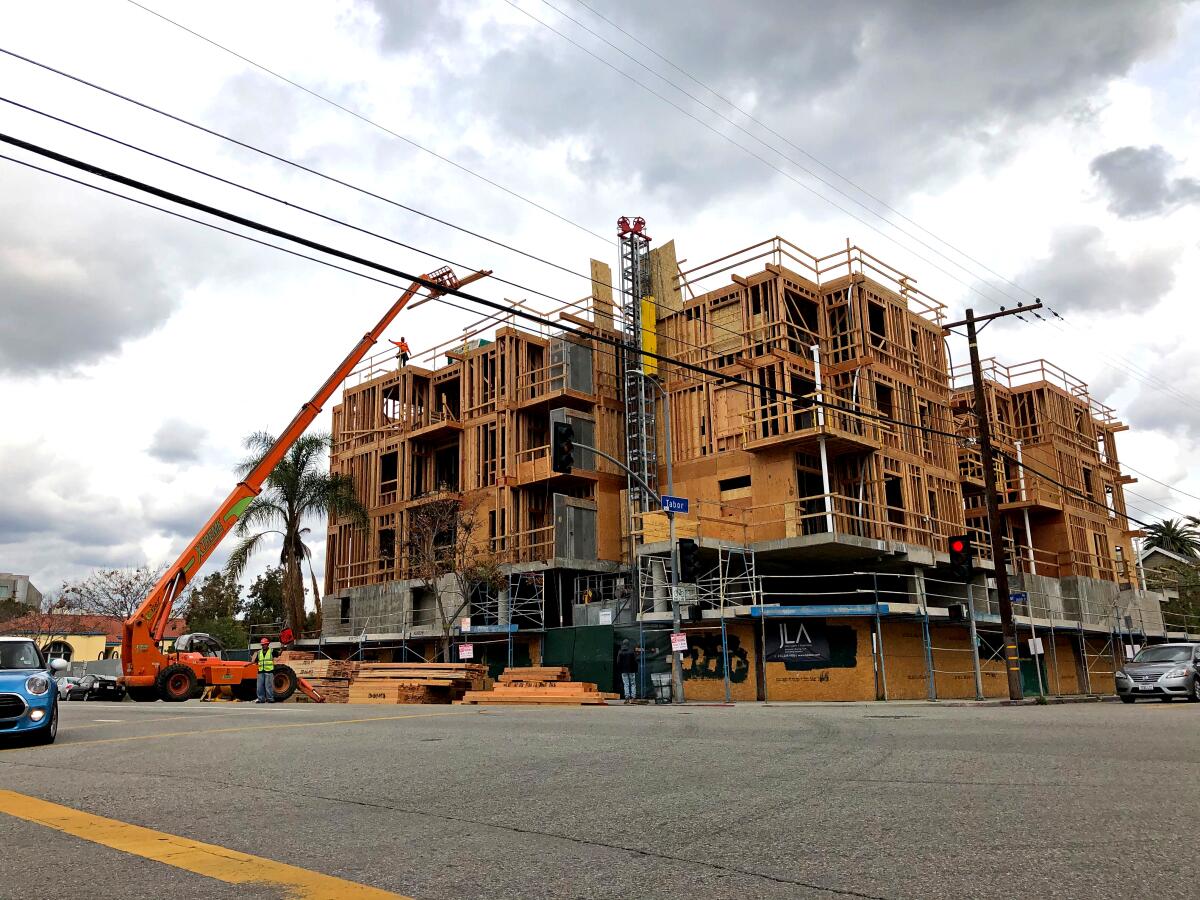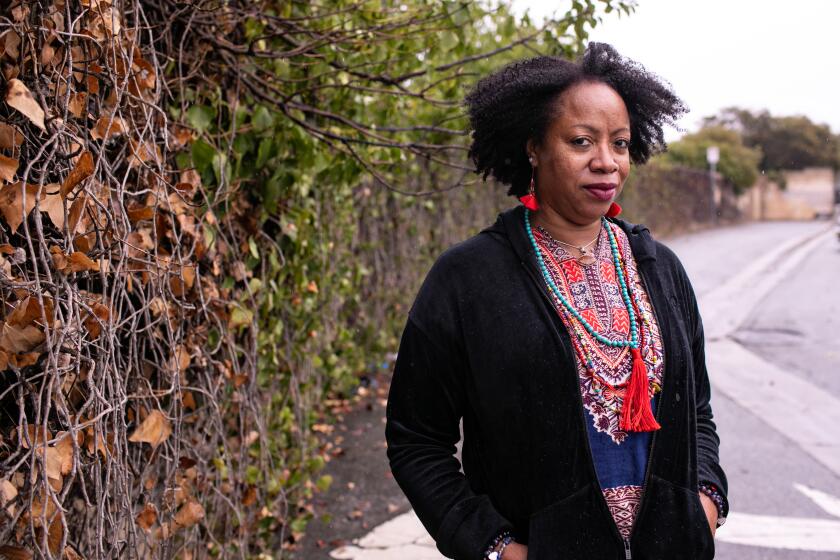L.A. has a new plan for creating more housing. An AIDS nonprofit wants it thrown out

Six weeks ago, the Los Angeles City Council approved a new strategy aimed at providing some measure of relief to local renters and home buyers by seeking to add nearly half a million new homes over the next eight years.
City Council President Nury Martinez hailed the plan, known as the city’s Housing Element, as a bold initiative — one that would establish one of the most ambitious rezoning programs in the nation.
The AIDS Healthcare Foundation, a nonprofit group with a history of fighting L.A. planning decisions, is now looking to torpedo the council’s action, saying city officials did not properly assess the environmental impacts of that strategy.
In a lawsuit filed last month, the nonprofit said the plan would allow officials to “upzone” much of the city — allowing developers to construct taller, denser buildings — without also requiring “a corresponding obligation to provide affordable housing.” That, in turn, would create “more painful displacement of persons, homelessness, and gentrification in the city,” the group said.
For years, Californians have flocked to states like Texas, Arizona and Nevada. Less recognized is the growing number of people leaving for Tennessee.
A spokesman for the Department of City Planning defended his agency’s work, saying city officials complied with the state’s environmental law and made sure to incorporate strategies for producing about 185,000 units of lower-income housing.
“I’m confident the court will reject this lawsuit and uphold the city’s action,” City Atty. Mike Feuer said in a separate statement.
State housing law requires that Los Angeles update its Housing Element every eight years, laying out its strategies for accommodating population growth and ensuring it has enough land zoned in a way that meets its housing needs — both in terms of market-rate units and those needed by lower-income residents.
Since 2014, the city has produced an average of 16,700 units per year, according to a report on the Housing Element prepared last year. To meet new housing goals set by regional planners, the city would need to permit about 57,000 per year.
L.A.’s updated Housing Element, titled “The Plan to House LA,” sets a goal of about 486,000 new housing units by October 2029. Of that total, about 230,000 units could be approved using planning initiatives that are already underway, said Yeghig Keshishian, spokesman for the Department of City Planning.
To ensure the remainder of the goal is met, city leaders would need to embark on a new rezoning program, one that would require City Council approval. The Housing Element identifies more than 243,000 properties that could be rezoned, increasing the city’s housing capacity by 1.4 million units.
The city will have to decide over the next three years which of those locations it will seek to rezone, Keshishian said. Still, planning officials cannot guarantee that every housing unit in the plan will be built, he said.
“Cities do not control the cost of land, labor, and materials that influence market development conditions. They do however wield a powerful tool — namely, zoning — which can make it easier to construct housing ... and, in doing so, relieve some of the supply constraints,” he said in an email.
AIDS Healthcare has a track record of challenging planning decisions at City Hall. It backed a ballot measure in 2017 to place new limits on large-scale development projects, which voters defeated. The group has also attempted to block the construction of high-rises in Hollywood, downtown and elsewhere.
In recent years, the group has forged ties to Councilman Kevin de León, who represents much of downtown and is running for mayor. Before he took office in 2020, the group’s Healthy Housing Foundation paid him more than $100,000 to provide consulting services on state rent control policy, according to city disclosure forms and advisors to De León.
The councilman appeared last year in a 30-second ad for Housing is a Human Right, another initiative of the AIDS Healthcare Foundation.
Despite those ties, De León sided with his colleagues, voting in November to approve the Housing Element. The plan, he said, is a commitment to produce “as many affordable units as possible, as quickly as possible.”
“My constituents can’t wait around for free market forces to magically create the affordable housing they need to survive,” he said in a statement Thursday.
The Housing Element case is not the only legal battle being waged over city zoning. City lawyers also have been in court defending a zoning plan for the Westside that would allow up to 6,000 new homes to go up near five Expo Line light rail stations.
Santa Monica is pushing a program among the first of its kind to offer affordable housing to families and their descendants who were displaced by the construction of Interstate 10.
The nonprofit group Fix the City filed a lawsuit in 2018 that sought to force the city to rescind its ordinance, known as the Exposition Corridor Transit Neighborhood Plan. The group said the Expo plan did not follow city policies requiring that there be adequate infrastructure and city services, such as firefighter and paramedic staffing, to serve the new development and the existing population.
Superior Court Judge Mary H. Strobel was not persuaded by those arguments, upholding the Expo plan’s approval and handling a victory to the city. Feuer hailed the decision last week, saying the city urgently needs more housing near public transit.
“L.A.’s future is closely tied to creating more transit-oriented development as we tackle our housing crisis and L.A.’s crushing traffic congestion,” said Feuer, who is also running for mayor.
Laura Lake, a board member with Fix the City, said her group intends to file an appeal. The city’s policies on development, and the need for adequate emergency response, are not discretionary, she said.
“We’re saying it’s mandatory,” Lake said. “We’re saying public safety comes first.”
More to Read
Sign up for Essential California
The most important California stories and recommendations in your inbox every morning.
You may occasionally receive promotional content from the Los Angeles Times.












